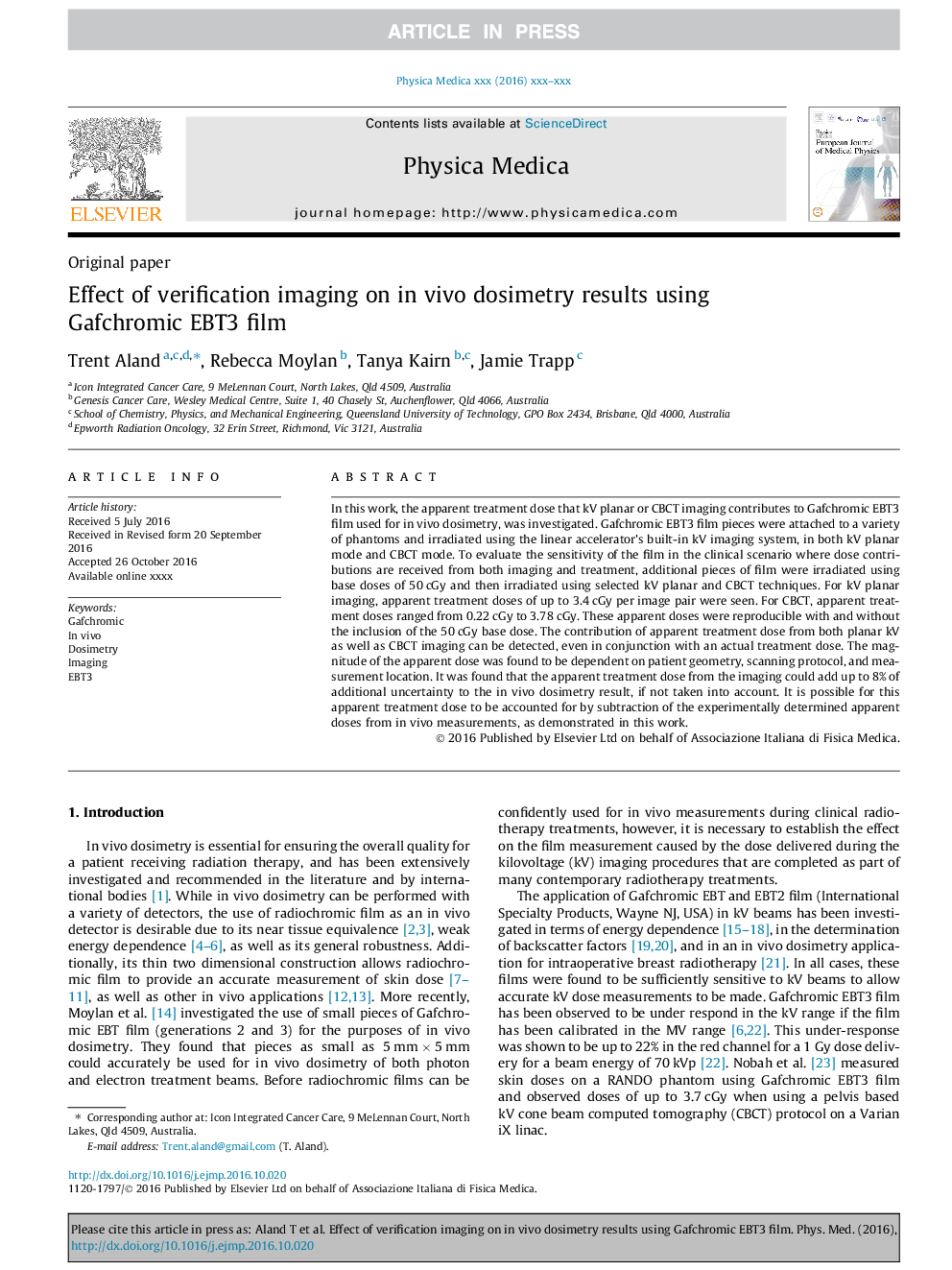| Article ID | Journal | Published Year | Pages | File Type |
|---|---|---|---|---|
| 5498693 | Physica Medica | 2016 | 5 Pages |
Abstract
In this work, the apparent treatment dose that kV planar or CBCT imaging contributes to Gafchromic EBT3 film used for in vivo dosimetry, was investigated. Gafchromic EBT3 film pieces were attached to a variety of phantoms and irradiated using the linear accelerator's built-in kV imaging system, in both kV planar mode and CBCT mode. To evaluate the sensitivity of the film in the clinical scenario where dose contributions are received from both imaging and treatment, additional pieces of film were irradiated using base doses of 50Â cGy and then irradiated using selected kV planar and CBCT techniques. For kV planar imaging, apparent treatment doses of up to 3.4Â cGy per image pair were seen. For CBCT, apparent treatment doses ranged from 0.22Â cGy to 3.78Â cGy. These apparent doses were reproducible with and without the inclusion of the 50Â cGy base dose. The contribution of apparent treatment dose from both planar kV as well as CBCT imaging can be detected, even in conjunction with an actual treatment dose. The magnitude of the apparent dose was found to be dependent on patient geometry, scanning protocol, and measurement location. It was found that the apparent treatment dose from the imaging could add up to 8% of additional uncertainty to the in vivo dosimetry result, if not taken into account. It is possible for this apparent treatment dose to be accounted for by subtraction of the experimentally determined apparent doses from in vivo measurements, as demonstrated in this work.
Related Topics
Physical Sciences and Engineering
Physics and Astronomy
Radiation
Authors
Trent Aland, Rebecca Moylan, Tanya Kairn, Jamie Trapp,
